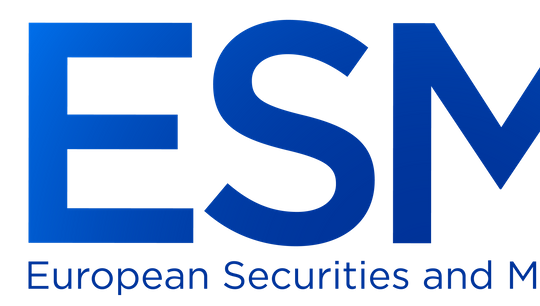Loan origination funds: A new regulatory framework under AIFMD II
By Nicolas Bouveret; Iyad El Hachem; Rachel Paton, Arendt & Medernach
Published: 18 March 2024
AIFMD II completes the AIFMD framework by introducing a new regime for loan originating AIFs and, more generally, for loan origination activities by or on behalf of AIFs. This new harmonised framework will impose operating conditions for AIFMs and introduces various requirements at AIF level.
New regulatory framework for loan origination by AIFs
EU policymakers have recognised that private debt and loan origination funds play an essential role in providing alternative sources of funding to certain categories of borrowers, including small and medium-sized enterprises which find traditional lending sources more difficult to access.
Most private debt funds operate as alternative investment funds (AIFs) within the general alternative investment fund managers directive (AIFMD) regulatory framework, which does not impose any specific requirements on such funds.
AIFMD II completes the AIFMD framework by introducing a specific regime for loan originating AIFs and, more generally, for loan origination activities by or on behalf of AIFs. The new regime aims to facilitate EU cross-border activities of loan originating AIFs by creating a harmonised framework.
AIFMD II’s recitals recognise “the right of AIFs to originate loans” and clarify that the new regime’s objective is to “make it possible for AIFs to develop their activities by originating loans in all Member States”. However, as such, the amendments introduced by AIFMD II do not mean that all Member States will allow AIFs (or allow all AIFs) to originate loans to borrowers under their jurisdiction. It is possible that Member States that already restrict loan origination by AIFs will continue doing so or define certain categories of AIFs that are permitted to originate loans under more restrictive local laws.
In Luxembourg, in principle, lending is a regulated activity if it consists in the granting of loans, on a professional basis, to the public. This activity is subject to specific CSSF authorisation, unless an exception applies (notably, for certain regulated funds such as SIFs). However, the CSSF has usefully clarified that a private lending activity should generally not be aimed at the public where (i) the nominal value of each loan is EUR 3,000,000 or more, and (ii) the loans are granted exclusively to professionals such as defined in the Consumer Code. In practice, most direct lending funds that are non-regulated AIFs are generally able to comply with these conditions.
Scope of new AIFMD II regime
The new regime applies to AIFMs that manage “loan originating AIFs” and more broadly to any AIFM that engages in “loan origination” activities on behalf of AIFs. A loan originating AIF is defined as “an AIF (i) whose investment strategy is mainly to originate loans; or (ii) where the notional value of the AIF’s originated loans represents at least 50% of its net asset value”. Loan origination is defined as “the granting of a loan directly by an AIF as the original lender or indirectly through a third party or special purpose vehicle, which originates a loan for or on behalf of the AIF or AIFM in respect of the AIF, where the AIF or AIFM is involved in structuring the loan, defining or pre-agreeing its characteristics prior to gaining exposure to the loan”.
Certain rules do not apply to an AIF whose only loan origination activity consists in granting shareholder loans, provided the notional value of those loans does not exceed in aggregate 150% of the AIF’s capital. For this purpose, a “shareholder loan” is defined as “a loan which is granted by an AIF to an undertaking in which it holds directly or indirectly at least 5% of the capital or voting rights, and which cannot be sold to third parties independently of the capital instruments held by the AIF in the same undertaking”.
New operating conditions for AIFMs
The activity of “loan origination on behalf of AIFs” is added to the list of permitted activities that an AIFM may perform in the course of the collective management of an AIF. For Luxembourg AIFMs, this is a confirmation of existing regulatory practice, whereby loan origination by or on behalf of AIFs was already considered a permitted activity for AIFMs, so long as the applicable local product law did not prohibit such activity.
To manage AIFs engaging in loan origination, AIFMs will have to ensure, subject to the shareholder loans exception, that they have implemented policies, procedures and processes for the granting of credit, in particular for assessing credit risk and for administering and monitoring their credit portfolio. These rules are broadly consistent with existing regulatory requirements for Luxembourg AIFMs managing AIFs engaging in loan origination.
New transparency obligations are also added, whereby AIFMs managing AIFs that engage in loan origination will have to periodically disclose the composition of the originated loans portfolio to investors.
Conditions impacting AIF terms and structures
The new regime also introduces new rules which will have a direct impact on the terms and structures of AIFs: diversification rules for loans to certain types of borrowers, prohibition of loans to certain connected parties, risk retention rules and the allocation of all loan proceeds to the AIF. These rules apply to all AIFs which originate loans, whatever their investment strategy.
- Diversification limit. Loans originated by or on behalf of an AIF to a single financial undertaking, an AIF or UCITS cannot exceed 20% of the AIF’s capital, subject to certain exceptions (such as a ramp-up of maximum 24 months). For this purpose, a financial undertaking is broadly defined as a regulated entity such as a credit institution, insurance company or investment firm.
- Prohibition of loans to connected parties. To prevent conflicts of interests, AIFMs must ensure that AIFs do not grant loans to certain connected parties, including their AIFM and its delegates, and their depositary and its delegates, or to an AIFM group entity.
- Risk retention rules. AIFMs must ensure that the AIFs they manage do not adopt an ‘originate-to-distribute’ strategy whereby the AIFs originate loans with the sole purpose of transferring those loans or exposures to third parties. Moreover, an AIF will have to retain at least 5% of the notional value of each loan originated for a specified period, subject to certain exceptions (such as disposal of a loan due to a deterioration in the risk associated with the loan).
- Allocation of loan proceeds. All the proceeds of loans originated by the AIF, minus any allowable fees for administration of the loans, must be fully allocated to the AIF. All costs and expenses linked to administration of loans must also be disclosed to investors before they invest.
In addition, two new rules will apply only to AIFs qualifying as loan originating AIFs: a cap on leverage used by loan originating AIFs, and additional liquidity management obligations for open-ended loan originating AIFs.
- Leverage cap. The level of leverage for a loan originating AIF cannot exceed 175% for open-ended AIFs and 300% for closed-ended AIFs, subject to the shareholder loans exception. For this purpose, leverage is calculated according to the AIFMR commitment method.
- Open-ended loan originating AIFs. A loan originating AIF must be closed-ended, unless the AIFM is able to demonstrate to its competent authorities that the AIF’s liquidity risk management system is compatible with its investment strategy and redemption policy. ESMA will develop draft regulatory technical standards to determine the criteria with which an open-ended loan originating AIF must comply.
The new rules apply to all AIFs without prejudice to stricter or specific limits applying under local product laws or EU laws, such as the ELTIF Regulation.
Next steps
The final text of AIFMD II has been agreed and is expected to be officially published by the end of Q1, 2024. Member States will have up to two years to implement the changes into national law, which means that the new regime will apply at the latest as of a date to be determined in Q1, 2026.
However, EU policymakers have recognised that, due to the potentially illiquid and long-term nature of the assets of loan originating AIFs, AIFMs might experience difficulty in complying with changes to regulatory requirements introduced during the life cycle of the AIFs that they manage without affecting investor trust and confidence. Therefore, AIFMD II contains certain grandfathering and transitional rules, which refer to AIFMD II’s date of entry into force, not the Member State implementation date.
An AIF constituted before AIFMD II enters into force that does not raise capital after the entry into force, will be permanently grandfathered from the diversification limit, the leverage cap and the additional liquidity management rules for open-ended loan originating funds. If the fund is still fundraising on the date of entry into force, it will be grandfathered from these rules for 5 years.
However, the new rules on procedures for granting credit, allocation of loan proceeds to the AIF, prohibition of loans to certain connected parties and risk retention, will apply to all new originated loans, subject to any transitional rules adopted under local law.
A “shareholder loan” is defined as “a loan which is granted by an AIF to an undertaking in which it holds directly or indirectly at least 5% of the capital or voting rights, and which cannot be sold to third parties independently of the capital instruments held by the AIF in the same undertaking”.






